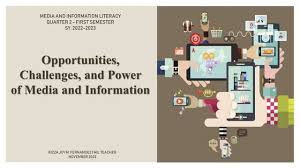
How to source a source in today’s tech journalism
What is the importance of a source for a journalist? Except for one condition and one condition alone, the journalist is entirely dependent on a source for filing a news story.
The condition is where the journalist is an eyewitness to news, or an event, happening, whence he need not rely on anyone else. But even that has a caveat. The journalist will still have to rely on a source to understand the situational background that led to the event.
But simply having a source does not result in a good story. The material provided by a source can always be challenged. This means, we are talking about not just any source with information to ply, but reliable information to part with. The reliability of the source and the source’s information depends on three conditions: One, the source has documentary evidence that can stand judicial scrutiny. Two, the source is important or credible enough to allow to be quoted as the source of the information. Three, the source knows people who can corroborate the information with their own.
How does one become a source? If one has seen or witnessed a situation that is not ordinary or that raises questions. If one has come across evidence of a crime or malfeasance. If one is a Good Samaritan, a whistle-blower, or a rank opportunist or even one who wants to bring down another due to enmity or jealousy. Ironically, while sources can be found on both sides of the law, the journalist has no moral compunction about ignoring a source who knowingly breaks the law. A source is, as is said, a source.
The source takes as much risk as the journalist to bring out a story to light, whatever the reasons or motivations. If it backfires, the source can get scalded. If the journalist does not protect the source, the latter can come to harm. So the source looks for integrity and honesty in the journalist as much as the latter favours similar characteristics in the former.
In sum, both the source and the journalist find their paths are intertwined the moment they cross. They bear each other’s cross, so to say. That cross is the unwritten word that they shall not cheat each other.
The deconstruction of a source is an effective exercise, even if time-consuming. It allows us to better appreciate the toughness of the journalist’s task before he embarks on a story. The task is simple: Find the correct source. The information will follow automatically. In that sense, the news is all about working angles and hypotheses and sometimes not discarding rank rumours, and more. Without the source, the hypothesis will remain a hypothesis. WaterGate will remain a rumour. Chernobyl a small accident. Yes, we are coming to the third important factor in the source-journalist relationship: Perspective. Without both having the ability to contextualise the hypothesis or rumour or elementary information in the correct perspective, both will miss the point despite having all facts in hand.
But why are we talking about all this, well, common knowledge that is available in any journalism textbook? Because there is, in present times, a fourth factor, let us call it the fourth dimension, that has upset the apple cart. First, desperation and existential emergencies, and second, technology has in recent years, reduced the gap between the source and the journalist. The source became the journalist. Rather, the source of news also became the newsmaker. That reduced the journalist to a spectator, a speechless one at that, one whose raison d’etre has been snatched away.
All those distant years ago, when we were watching the first produce of international journalism in the form of Scuds and other missiles going hither and thither during the Gulf War, we began to realise how conflict, or news, affects those far away from us. The visuals were more than ‘entertainment’ in that sense. We were able to empathise with the people whose homes were destroyed in the Gulf countries at war. But we could not get close to them through their stories of abandonment or disillusionment or death.
That changed during the Iraq war when Salam Pax, Iraqi national Salam Abdulmunem who used that pseudonym, used the elementary models of the internet to tell the world the story of his people. He would at regular intervals in a day update us on the cost of the conflict to the people around him. Thus, the horrors came before the world. And Sam Pax probably became the first source-cum-journalist.
Today, the scope of technology and outreach of social media has made sources shun journalists and become news or newsmakers themselves. They tweet about themselves. They tweet about what they are doing. They tweet their reactions to events.
The tweet is the source of the journalist today. Much of the ‘news’ flow to the journalists through social media, where the original sources, now the newsmakers, dish out the information. Nothing wrong with this arrangement, except for one thing.
The information that comes out in this manner is subjective, projects the newsmaker’s viewpoint on matters and issues, and is not subject to scrutiny. Also, ‘information’ has undergone a change just like the source became the newsmaker. Information is today’s ‘reaction’.
The journalist is truly challenged like never before since the first of the breed ever came out with the first slice of information. It is not that newsmakers have taken over the world of news. No. But the trend points to that. From the newsmaker’s (source’s) point of view, they need not depend on the journalist to bring out their news any longer. They bring out their news themselves.
What can the journalist best do in this situation? The journalist has metamorphosed from being an informant to an analyst. The journalist analyses the newsmaker’s reactions and dishes them out as news. So, news has also undergone a transformation.
The story does not end here. The story waits here for the next twist.
 VVP Sharma
VVP Sharma







